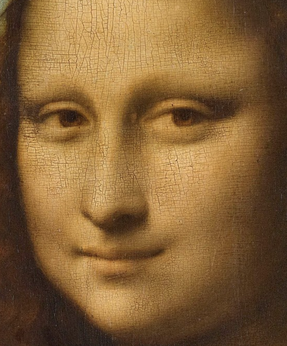Exploring the Western World with Eastern Ingredients. There is a Korean artist who captures landscape paintings with a sense of familiarity unique to the Orient and portraits obtained by visiting China and Mongolia through the misty and mighty tip of a brush. Using the 'sfumato technique', he developed oriental painting materials and techniques into his own unique technique, interpreting oriental painting in a western way and creating a new world of art. Sfumato is an Italian word meaning 'smoke-like' and is a technique of naturally spreading the contours of objects or people without detecting them with lines. This technique is fine shading to create smooth transitions between colors and tones to achieve images with greater detail and depth. It is often used to create a subtle gradation from light to dark without lines or borders. This technique has been used not only to create ambiguous and fantastical representations of human faces, but also to create rich atmospheric effects. Leonardo da Vinci described this technique as mixing colors without the use of lines or borders "like smoke". Sfumato is an oil painting technique primarily associated with Leonardo da Vinci's Mona Lisa, where the contours of the face are unrecognizable and the shadows have only a soft gradation. A great sfumato can be obtained using a variety of art techniques, such as applying a thin glaze, as Leonardo did. A smudge technique using a rag and fingers, and finally dry brushing a fine cake mixture of oil paint over specific areas of the portrait. Thinner paint rubs lightly like a soft pencil or charcoal. This technique, like oil painting, can be painted subtly, allowing for minimal brush strokes and materials by rubbing oily paint on a cloth canvas between the threads of the textile and among the tiny fine spaces. However, there is a limit to expressing this technique with oriental paint that spreads uncontrollably with a few drops of paint on paper. This is also the fundamental reason why oriental ingredients do not have a western feel. Therefore, if these technical limitations are not overcome, there is a high possibility of being isolated in each area, divided into oriental and western. In this case, there is a risk that art will become indigenous and will not develop any further. However, in my personal opinion, it is interesting that Lee Gwan-soo, who challenged Western techniques beyond the limitations of materials, raised the possibility of a fusion art of the East and the West once again. And as more and more of these challenging oriental painters become more and more, I want it to become a common style of painting where the oriental and western arts naturally harmonize. Below are some of my favorite works by Lee Kwan-soo. * The image above was uploaded with the permission of the artist and cannot be downloaded or used for other purposes under copyright.
0 Comments
Leave a Reply. |
Myungja Anna KohArtist Categories
All
Archives
July 2024
|
Proudly powered by Weebly





 RSS Feed
RSS Feed